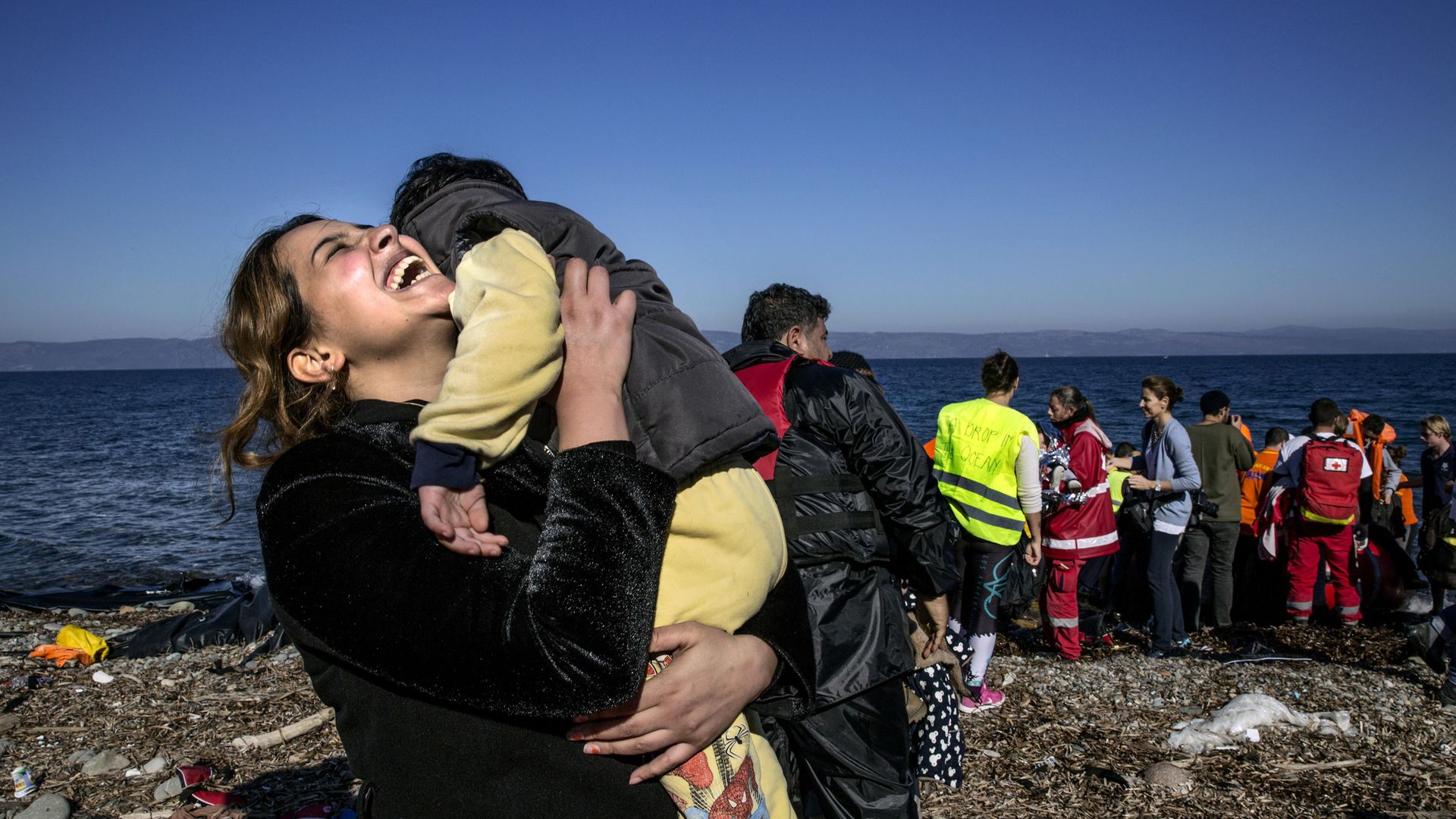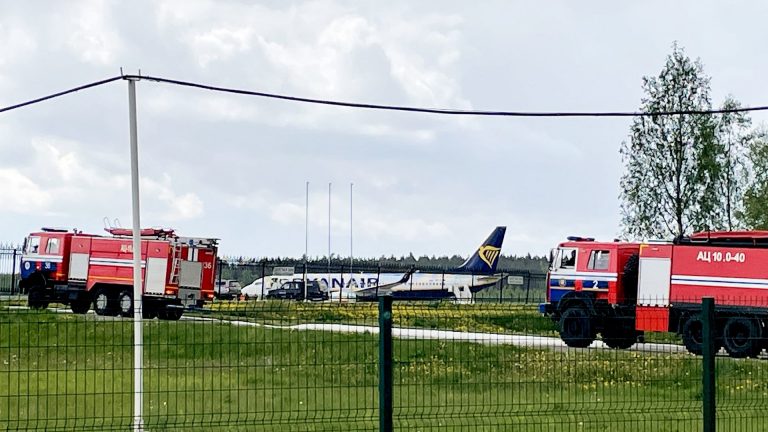
A flotilla of miniature, makeshift boats greets visitors as they return after many months of corona-mandated closures to Amsterdam’s colonial era Tropenmuseum. The thousands of vessels, making their way, wave after wave, towards the entrance, are the work of Cambridge-based Syrian artist Issam Kourbaj, his way of reminding the world of the ongoing displacement of millions of his fellow countrymen.
It’s a timely reminder. Some ten years after the start of the civil war, Syria’s dictator, Bashar al-Assad, is back in control of roughly 70% of the country. At the end of May, he had himself re-elected, signalling that he’s not going anywhere. This will not help solve the ongoing refugee crisis in the region, where millions are still displaced. It may even presage a new humanitarian catastrophe, if he goes on the attack again.
Meanwhile, the EU is working hard to discourage more refugees from coming. It’s seeking to strengthen its deal with Turkey for that purpose while also building new obstacles along its external border. Some countries are taking a harder line towards refugees, notably, Denmark. As of May, the Danes are threatening to repatriate some Syrian asylum seekers, arguing that the area around Damascus is now safe, which at the very least is a gross oversimplification.
Yet, despite this and occasional eruptions, the Syrian refugee crisis has mostly sunk beneath the surface of the European consciousness and in some ways that’s a good thing. It’s much less an issue now than it was at its peak when Nigel Farage and UKIP, five years ago this month, pictured lines of refugees in his now infamous ‘Breaking Point’ poster during the Brexit referendum campaign. It suggested the EU, and by extension the UK, was facing an unmanageable tide of refugees and thus weaponised the Syrian crisis for British domestic political purposes.
In the UK, this supposed influx was never plausible. The country last year hosted a mere 11,500 UNHCR-recognised Syrian refugees, despite pledging to accept more. Compare that to Germany’s more than 562,000, Sweden’s 114,000 and even the less welcoming Netherland’s almost 35,600. All those countries have coped without major disruption to their way of life or their economies, on the contrary, some might argue.
This September, Germany faces its first post-Angela Merkel elections. She kept the borders open in 2015, famously saying, “Wir schaffen das”, ‘we can do this’. Only the extreme-right Alternative Für Deutschland, AfD, is trying to use anti-immigrant sentiment to curry favour with the voters. The other parties appear to have silently agreed to keep it out of the campaign. Merkel’s CDU/CSU and the pro-immigrant Green party are vying for the lead, indicating that the anti-refugee issue is not a big winner.
Bente Scheller of the Heinrich Böll Foundation, which is aligned with the Greens, says: “When the refugees arrived in large numbers, typical right-wing slogans were, ‘they will be stealing our work’ etc. But the German economy is doing quite well, despite the pandemic, and it has not affected the jobs market.”
Many of the Syrians have indeed found work and built new lives for themselves. There’s a parallel with the arrival of some 325,000 people from the former Yugoslavia during its civil war in the 1990s. “There were the same prejudices, people were asking will they fit in? But now nobody talks about them anymore,” says Scheller.
Even so, polls show that Germans have toughened their stance on migration since 2015 and might not be as welcoming if there’s a next time. When Tareq Alaows, a Syrian refugee, stood as a candidate for the Greens in the upcoming Bundestag elections, he faced a barrage of threats and insults and decided to withdraw.
Elsewhere, resistance to newcomers has not disappeared either. In the Netherlands, for one, the right-wing PVV party is still stoking the fire, recently charging the government with “mollycoddling” refugees with regard to housing.
Scandinavia offers a different perspective, with Denmark and Sweden on divergent courses. Denmark has a longstanding and powerful political anti-immigrant movement, which has propped up coalitions. The country’s social democrats in response have become tougher on migration and are carrying out part of the right wing agenda. In Sweden, like elsewhere in Europe, there’s also a strong right-wing presence but the country’s social democrats have stuck to their traditional welcoming stance towards asylum seekers, even when it seemed electorally unwise.
Apart from the countries with the largest number of refugees, it’s those in southern Europe that are most directly confronted with the Syrian crisis. In Italy, Matteo Salvini and his Lega keep up an incessant anti-immigrant drumbeat, with Salvini even on trial for having tried to block refugees aboard a ship in the Mediterranean from disembarking in 2019 when he was interior minister.
In Greece the neo-Nazi Golden Dawn party has disappeared from parliament, after gaining strength during the height of the refugee crisis. But its allies in Cyprus last month almost doubled their representation, partly on the back of a new influx of refugees from Syria.
It shows that Europeans ignore the ongoing Syrian crisis at their peril. More than five million Syrians are living in often dire circumstances in Turkey and Lebanon alone. Inside Syria millions more are displaced, many in Idlib, one of the last rebel-held areas. A push, or even a squeeze on Idlib by the Assad regime, authorized by his Russian and Iranian sponsors, could once again cause more to flee. A scenario that Turkey will try to counter, militarily if necessary.
What has allowed Syria and its displaced multitudes to slip from the European mind to a degree, is the deal that the EU made with Turkey in 2016.
Ankara keeps the refugees from moving on to Europe in exchange for a lot of money. This mechanism also means that when Turkey wants to up the pressure on the EU, it can threaten to unleash its refugee reserves, or bus them to the EU border as it did early last year. This is not a stable situation for the EU, certainly not while it’s involved in disputes with Turkey, not least over a Turkish push into Greek territory for oil and gas exploration.
The EU response has been to build walls on the Greek-Turkish border, develop high-tech counter-measures to stop refugees entering, and bolster its burgeoning border force, Frontex, which has been accused of participating in, or turning a blind eye to, southern countries’ increasingly aggressive ‘pushbacks’ of not only Syrians but also Iraqis, Afghans, Congolese and others who keep seeking shelter and a better life.
It’s a devilish dilemma for the EU and also the UK, which post-Brexit is facing an increasing number of migrant-filled boats of its own. Keeping more refugees from coming might be a way to counter popular unease over their presence but it exposes the bloc to international blackmail and demands measures that often run counter to professed humanitarian principles.
Displacement has become a defining feature of our time. It is no coincidence that Kourbaj’s flotilla, Dark Water, Burning World, was recently added as the 101st item in the BBC’s series The history of the world in 100 objects, representing the past decade. Each small boat carries a trauma, says Kourbaj, a trauma that can only be addressed if the refugees are welcomed and enabled to put down new roots.
What do you think? Have your say on this and more by emailing letters@theneweuropean.co.uk
Warning: Illegal string offset 'link_id' in /mnt/storage/stage/www/wp-includes/bookmark.php on line 357
Notice: Trying to get property 'link_id' of non-object in /mnt/storage/stage/www/wp-includes/bookmark.php on line 37







